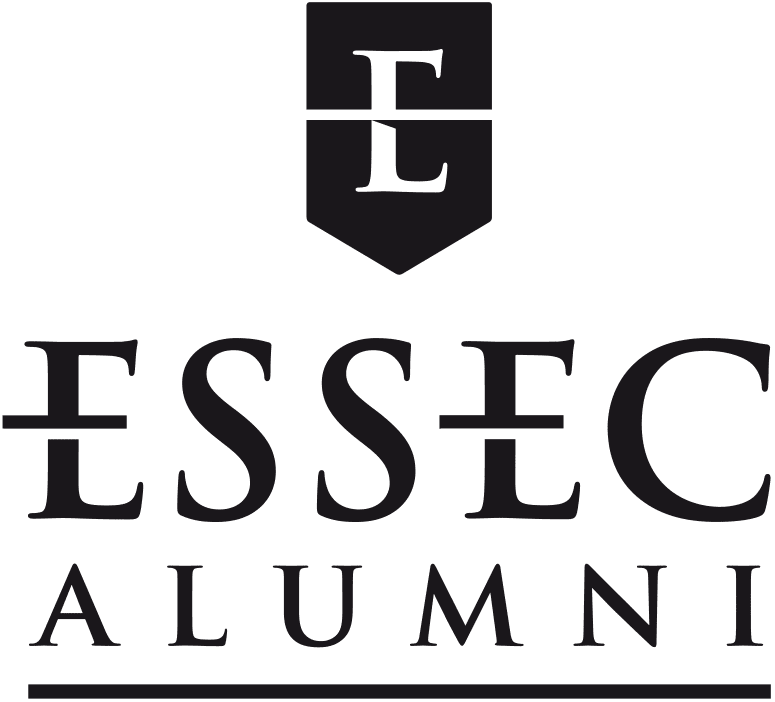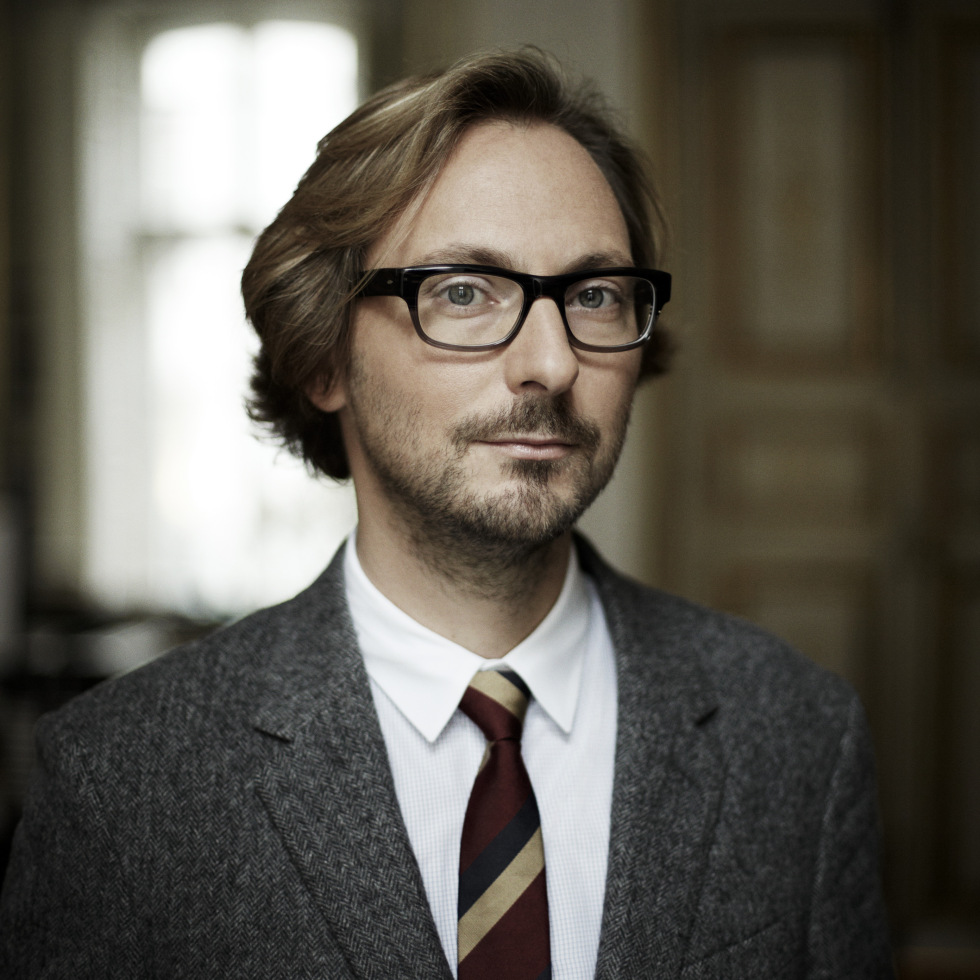43-year old Nicolas Bos (E92) is a happy man. Born and raised in Paris, the father of two daughters, age 10 and 12, runs renowned jeweller Van Cleef & Arpels with the mission 'to combine a century-long heritage history of innovation with a rich identity set in a contemporary world'. He has a passion for arts, theatre, literature and old books, and has been working with global luxury giant Richemont throughout his entire career, working at Cartier first, for about ten years, then at Van Cleef & Arpels after it was taken over by the Swiss holding company. He is a man of culture who likes to point out that his activity is as much business as creativity.
ESSEC Alumni: What led you to the cultural and arts sector when you left ESSEC ?
Nicolas Bos: Truth be told, it was my first interest. I still remember my interview to join ESSEC. I met Olivier de Tissot, a great law professor, and we mainly talked about arts and literature. Towards the end of the interview, he told me: 'You seem like a nice chap, but I really don't see why you are here. You don't seem to fit the business or the entrepreneur profile.' I told him I was interested in companies that mixed business with culture. We went on talking about publishing companies, museums, and I used the Fondation Cartier as an example to show that there were many connections between the arts and the business worlds, and that many cultural institutions were professionalizing their management and sales. I got a good grade. Actually I think this is what got me in!
EA: Then you got your first job at the Fondation Cartier...
N. Bos: Yes. After my internship there and once I graduated, they hired me as a marketing assistant. I spent ten years at the Fondation Cartier, then I spent time between the Fondation and the Maison Cartier, because I had assignments that concerned both entities. I was coordinating the artistic projects while keeping an eye on business and marketing issues. I gained experience in the commercial, marketing and admin departments. Then Richemont, who owns Cartier, took over Van Cleef & Arpels after the Arpels family in 1999, and they offered me to follow some of my bosses who were going to run Van Cleef, and to be part of the rebirth of this beautiful company. I was in charge of marketing, then product development for fine jewellery and watches, then gems, communication, and I ended up being the creative director for all the collections. I was then appointed President of Van Cleef & Arpels Americas, where I spent three years.
EA: After 13 years you were appointed CEO of Van Cleef, with a double mission to manage the business as well as the creative team.
N. Bos: This is how I built my whole career. I returned to my first love, getting to a position and an environment with a cultural and artistic dimension, business and marketing challenges, and sales development stakes. I always wanted to have a foot in both camps. I see no contradictions there, even though some consider them different, opposite even. I am utterly convinced that in sectors like fine jewellery, and other luxury industries, creative and business aspects are intertwined. Historically, these were family-run maisons, they dealt with creating and developing sales; at the time, it guaranteed their success. Today we are not in a market with needs, trends, or competitors we need to follow and copy. We sell near works of art to clients who like to be surprised, delighted by what we offer. I would even say that the heavier the marketing, the blander you become; the less amazing your are, the less it will work.
EA: Is growth still vigorous in fine jewellery?
N. Bos: It is still a growing market because it is a global market that continues its development in certain parts of the globe, like certain countries in South America, in China, in Russia the last 15 years. So the global market grows. The fine jewellery market is an extremely generic one, where brands have a small share, around 15%, which is very small in comparison with the luxury watches market. There is room for even more growth, particularly in Asia-Pacific and India, but also in the States and South America.
EA: Fine jewellery, particularly Van Cleef & Arpels, has an increasing share in Richemont's profits. Can you explain it?
N. Bos: I think it's a temporary situation: the watch market is crowded (Editor's note: Richemont owns a dozen or so luxury watch brands), its growth came from Asia, mostly Hong Kond and Macao, and they have been struggling for the past year. As a result, retail sales are slower, and inventories are up. In fine jewellery, cycles are longer, it takes two to three years to design and craft a collection, up to ten years to promote it. We are now seeing the fruits of what we sowed several years ago. These two factors combined lead to a higher share for fine jewellery. We are very happy to prove our shareholder right, after some analysts claimed 15 years ago that the price paid for Van Cleef & Arpels was too high. One of the great strengths of our group is the ability to spot the brands which can become good investments in the medium to long term.
EA: Why did you decide to open a jewellery school?
N. Bos: It seemed quite obvious actually. Our craft is captivating to many, but few know how it works; it's difficult to get in, it's intimidating, and there are very few training courses for the wider public. For several years now, clients, enthusiasts, journalists, have been asking us how they could learn about this world. It led us to create a school of initiation to fine jewellery for a large audience, like those for wine and culinary arts. The school is based in Paris, but it will travel; we took it to Hong-Kong, Tokyo, and New York. We plan to open several branches abroad, and it would be interesting to have a permanent program in the United States and in Asia.
EA: Talking about passing on your knowledge, how important is the partnership between Richemont and ESSEC's MBA in Luxury Brand Management for your group?
N. Bos: It is extremely important for us. We consider it a priority, both at the group and brands levels. ESSEC made a pioneering move when it created the LVMH Chair some twenty years ago, considering luxury as a specific sector with its own management and marketing rules that require a particular training. It is important for us, the actors of this industry, to be part of that education. The more we open our doors and get people to learn about our craft, the better. The strategy pays off, as we employ a great number of alumni.
EA: What do you remember of the years you spent on ESSEC's campus?
N. Bos: I remember feeling really at ease in a school that wanted to be low-key and focused on educational contents, much more than its distinguished competitor, whose 'hype' and 'flashy' image did not suit me!
By Michel Zerr
First published in Reflets ESSEC Magazine n°112. Click here
to subscribe.

Comments0
Please log in to see or add a comment
Suggested Articles




